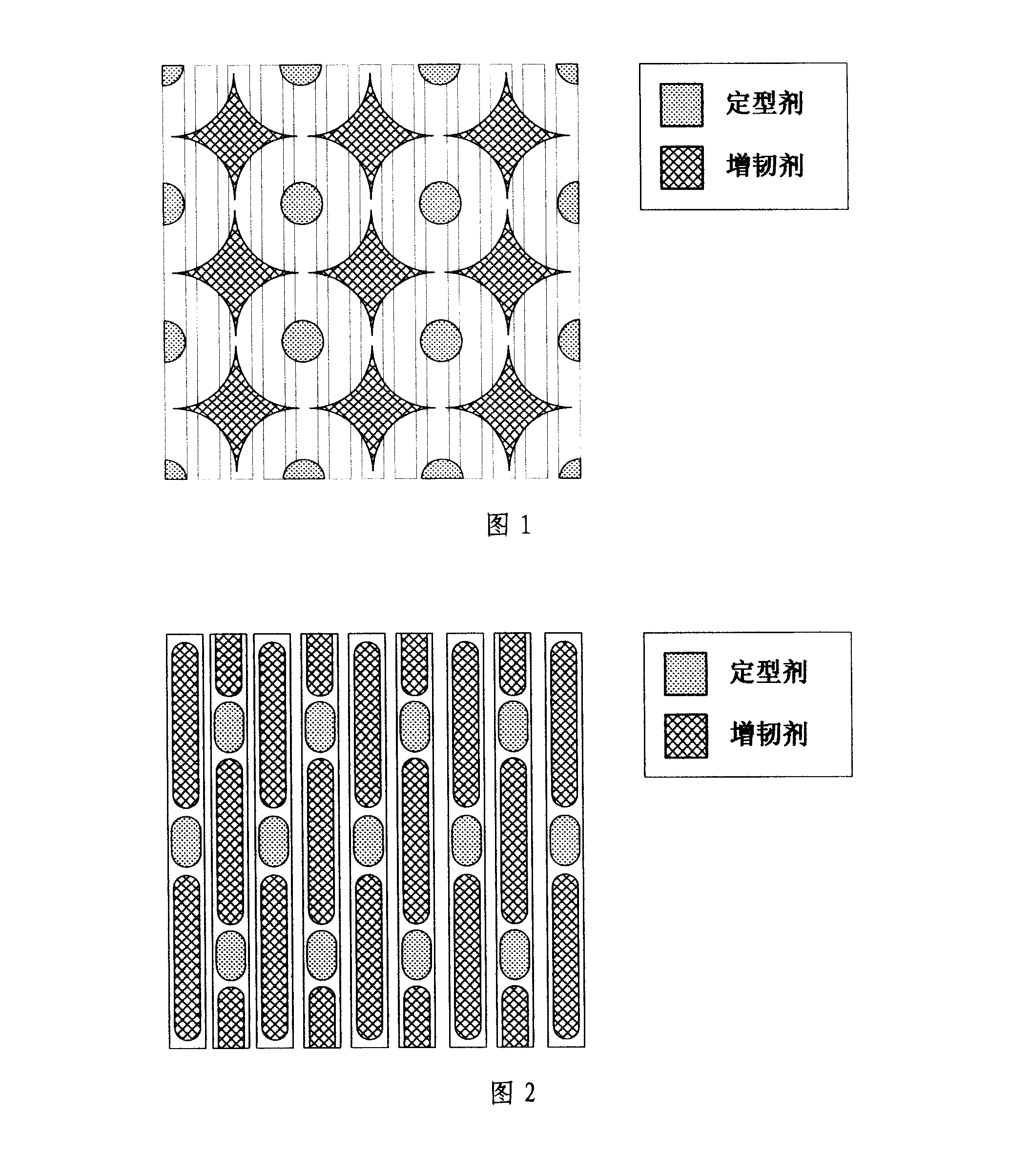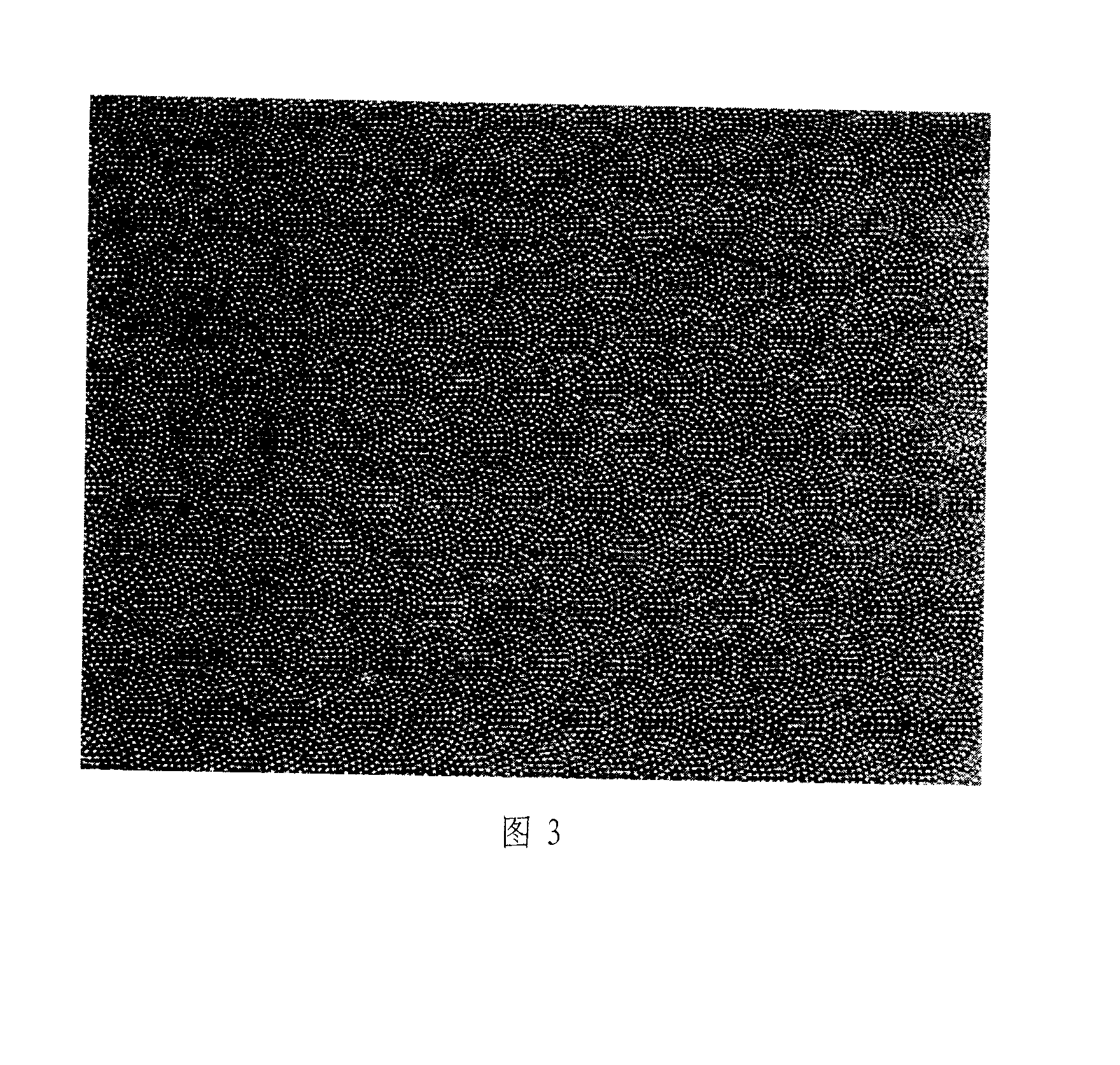Prefabricated fabric for liquid condition shaping composite material and preparation thereof
A composite material and liquid forming technology, which is applied in the field of composite material manufacturing, can solve the problems affecting the combination and non-existence of the fiber-matrix interface, and achieve the effect of small impact and reduced usage
- Summary
- Abstract
- Description
- Claims
- Application Information
AI Technical Summary
Problems solved by technology
Method used
Image
Examples
preparation example Construction
[0027] The method for preparing a prefabricated fabric for liquid forming composite materials as described above is characterized in that the preparation steps are as follows:
[0028] 1. Adhesion and toughening layer;
[0029] 1.1. Prepare the precursor material of the toughening layer, prepare the toughening component in the form of glue, powder, film, hot melt adhesive or fabric, and exist independently or attached to the lining paper or lining cloth.
[0030] 1.2. Adhering the toughening layer precursor material to one or both surfaces of the base fiber fabric, the method adopted is: the glue is coated with a solution; the powder is coated with hot-melt coating or powder coating; the film is composited with film; The hot-melt adhesive adopts hot-melt coating or hot-press transfer; the fabric adopts fabric compounding or hot-melt coating to form a continuous toughening layer or a discrete toughening layer with a certain pattern.
[0031] 2. Adhesive shaping layer;
[0032] ...
Embodiment 1
[0036] Preparation of the toughening layer: Polyethersulfone (PES) was dissolved in tetrahydrofuran (THF) to prepare a 5% solution. On the solution scraping film machine, evenly scrape the PES solution onto the backing paper, and obtain a toughened film after the solvent evaporates. Adjust the height of the knife edge of the scraping film to control the surface density of the toughened film to 20g / m 2 . Trimming and winding to obtain a continuous PES film with a width of about 900mm.
[0037] Place the SW280 plain glass fabric on the stainless steel conveyor belt, and the PES film is unwound and adsorbed on the upper surface of the glass fabric. The fabric covered with PES film moves forward and passes under the THF spraying device. After being dissolved by THF, the PES film closely adheres to the surface of the glass fabric and shrinks as the solvent volatilizes, leaving a gap between adjacent glass strands. out of the gap. After the solvent is volatilized, it is wound up...
Embodiment 2
[0041] Preparation of toughening layer: Add polyetherimide (PEI) resin powder into water dissolved with emulsifier and thickener to prepare a slurry with a viscosity of about 10 000 cPoise and a solid content of about 35%. The slurry is coated on the G827 unidirectional carbon fiber fabric through a rotary screen engraved with a specified pattern on the slurry point coating machine, and passed through a high-temperature oven at 380 ° C to melt and bond the PEI powder on the surface of the carbon fiber fabric. By designing the pattern of the rotary screen, the surface density of the sizing agent is controlled to 10g / m 2 . So far, the compounding of the toughening layer is completed. (A typical toughening layer pattern is shown in Figure 3).
[0042] Preparation of the shaping layer: carboxy-terminated nitrile rubber (CTBN) particles and AG80 epoxy resin were mixed in a weight ratio of 5:100, and then cryogenically frozen and pulverized to make shaping agent particles. On the...
PUM
| Property | Measurement | Unit |
|---|---|---|
| Areal density | aaaaa | aaaaa |
| Thickness | aaaaa | aaaaa |
| Areal density | aaaaa | aaaaa |
Abstract
Description
Claims
Application Information
 Login to View More
Login to View More - R&D
- Intellectual Property
- Life Sciences
- Materials
- Tech Scout
- Unparalleled Data Quality
- Higher Quality Content
- 60% Fewer Hallucinations
Browse by: Latest US Patents, China's latest patents, Technical Efficacy Thesaurus, Application Domain, Technology Topic, Popular Technical Reports.
© 2025 PatSnap. All rights reserved.Legal|Privacy policy|Modern Slavery Act Transparency Statement|Sitemap|About US| Contact US: help@patsnap.com


